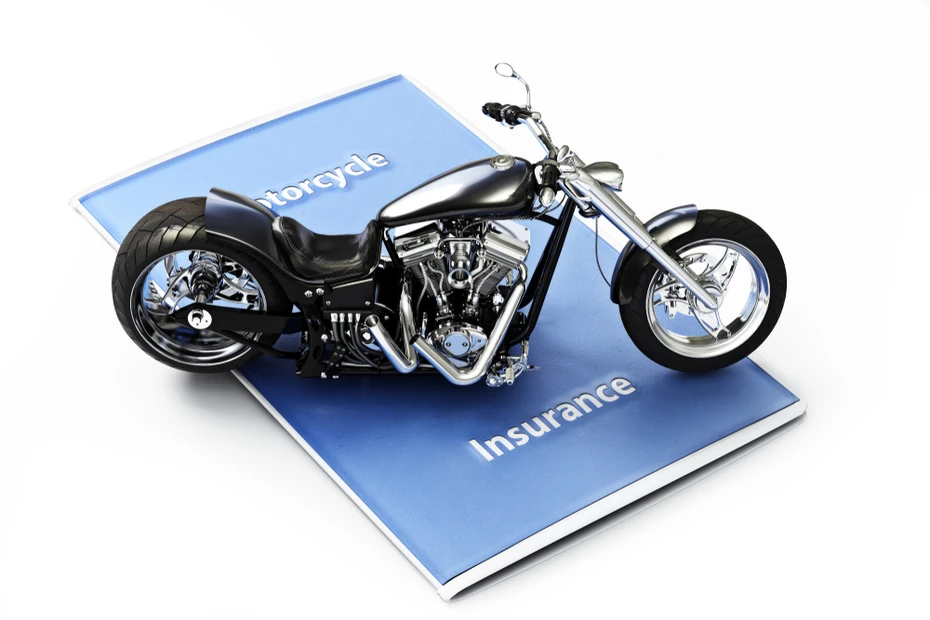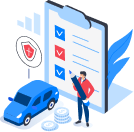RTO Rules for Bikers in India: Traffic Laws, Fines & Safety Tips
RTO Rules for Bikers:
Every year, more than 150,000 individuals lose their lives in accidents on Indian roads, with the primary reason being a lack of proper traffic awareness among the populace. Consequently, Indian roads rank among the most perilous globally.
To tackle this problem, the government enacted the Motor Vehicle (Amendment) Bill 2016, which has recently received cabinet approval and is now in force. This road safety legislation outlines the consequences and fines for various traffic violations. The bill incorporates input from transport ministers of 18 Indian states.
Traffic rules in India
Here are some important RTO Rules for Bike:
- Always wear a helmet while riding.
- Use indicators for signaling while riding.
- Limit pillion riders to one.
- Stay focused on the road at all times.
- Make sure to use rearview mirrors.
- If you need to pull over, do so with caution.
Due to population's complete absence of traffic understanding, over 150,000 individuals each year die naturally on Indian roads, a statistic that is well identified all around the world. The national government has finally decided to take significant action after previously failing to address this issue. This involves enforcing stricter laws and penalties to crack down on traffic violations.
To address this concern, the government introduced the Motor Vehicle (Amendment) Bill 2016, which has recently received cabinet approval, making it law. This legislation on road safety defines consequences and fines for various traffic infractions, and it takes into account suggestions from transport ministers representing 18 Indian states.
Don’t become a victim: Ride Safe
Ignorance holds no benefits, especially in this context.
Indian roads experience an alarming rate of approximately 400 daily fatalities resulting from road accidents. Annually, there are nearly 500,000 road accidents, leading to around 150,000 fatalities and leaving another 300,000 individuals with disabilities.
Riders who lack awareness often disregard traffic laws and important RTO regulations for bikes, leading to encounters with the law. However, the more unfortunate consequence is that both the rider and drivers of other vehicles may lose their lives or sustain severe injuries as a result.
New Traffic Rules and Fines
The federal government has taken a tough stance against traffic offenders in response to the rising incidence of traffic accidents. The Motor Vehicle (Amendment) Measure 2016, a road safety bill that specifies fines for numerous traffic violations, just received approval from the Cabinet. These measures are founded on recommendations put forth by transport ministers from 18 states.
Here are some of the updated penalties for traffic rule violations:
|
Violation |
Previous Fines |
New Fines |
|
Driving Without a Helmet |
100 |
1,000 |
|
Not Wearing Seat Belts |
100 |
1,000 |
|
Speeding |
400 |
1,000 – 2,000 |
|
Driving Without a License |
500 |
5,000 |
|
Drunk Driving |
2,000 |
10,000 |
|
Using a Mobile Phone While Driving |
1,000 |
5,000 |
|
Jumping Traffic Signals |
1,000 |
5,000 |
Rule Book For All Bikers - Important Traffic Rules to Follow
Here are some essential RTO Rules for Bike that should be followed by everyone while driving your two-wheeler:
1. Always Wear a Helmet: When riding, always wear a helmet. It's a crucial safety precaution, not merely a requirement.
2. Use Indicators: Signal your intentions by using indicators when changing lanes or turning.
3. Pillion Riders: Limit the number of pillion riders to one, and ensure they wear helmets too.
4. Pay Attention to driving on the road: Keep your attention at all times and avoid distractions like mobile phones.
5. Use Side Mirrors: To keep a close eye on your surroundings, use the side mirrors on your bike.
6. Follow Speed Limits: Adhere to speed limits, which vary depending on the type of road and location.
7. No Drunk Driving: Never drink and ride. Drunk driving is not only illegal but also extremely dangerous.
8. Respect Traffic Signals: Obey traffic signals and stop signs. Running red lights is a serious violation.
9. Keep Left: Stay on the left side of the road, especially in countries where driving is on the left side.
10. No Overtaking from the Left: Overtake vehicles from the right side whenever possible.
11. Stay in Your Lane: Maintain your lane discipline and avoid weaving between lanes unnecessarily.
12. Maintain Safe Following Distance: Keep a safe distance from the vehicle in front of you to allow for sudden stops.
13. Be Cautious at Intersections: Exercise extra caution at intersections and look out for other vehicles.
14. Use Horn Sparingly: Use your horn only when necessary, as excessive honking can be a nuisance.
15. Respect Pedestrian Crossings: Stop at pedestrian crossings to allow pedestrians to cross safely.
16. Observe No-Entry Signs: Do not enter roads or areas marked as "No Entry."
17. Turn on Headlights: Keep your headlights on, especially during low-light conditions.
18. Obey One-Way Streets: Follow the direction indicated on one-way streets.
19. Park Properly: Park your two-wheeler in designated parking areas and follow parking rules.
20. Use Hand Signals: Use hand signals to communicate your intentions, especially in the absence of indicators.
Remember the above mentioned RTO Rules for Bike not only keeps you safe but also contributes to overall road safety. Always prioritize safety when riding a two-wheeler.
What Are the Helmet Laws for Two-Wheeler Riders in India?
The Motor Vehicles Act states that all two-wheeler riders above the age of 4 must wear protective headgear ( helmet). Section 129 of the act states that all two-wheeler passengers must wear protective gear like helmets equipped with belted straps for stability during an accident. Failure to do so may invite a hefty fine of INR 2000 for initial offenders. Repeat offenders may have to spend on higher penalties and some time in jail.
What Are The Speed Limits For Two-Wheelers In India?
Those driving two-wheelers are expected to follow these speed limits while on the road.
- 4-lane divided roads (including highways): 60 Kmph
- Other roads (including city roads): 50 Kmph
- Specific State Regulations: Some states have specific regulations, such as Kerala, which has a speed limit of 70 kmph on National Highways and 80 kmph on 4-lane highways.
The speed limits for two-wheelers on state highways and national highways differ depending on the state.
Documents To Carry When Riding Bikes
Indeed, it's crucial to carry specific mandatory documents when riding your bike. Keeping these documents on hand is essential, especially when you're stopped by traffic police for document verification.
RC or Registration Certificate
The Registration Certificate (RC), often referred to as RC, is the most critical bike document to carry at all times. By showing that the bike has been registered with the Regional Transport Office (RTO), it verifies its authenticity. This bike registration process at the RTO paper contains important information about the bike, including its registration number, manufacturer, model, and owner information. It also includes necessary information about bike ownership transfer rules.
DL or Driving License
A Driving Licence (DL) authorizes the holder to legally operate a two-wheeler on public roads. This document is granted by the RTO after successfully passing the necessary driving test. The DL will also specify the type of two-wheeler the holder is allowed to ride: With Gear or Without Gear. It's crucial to ensure that you ride a bike in accordance with the specifications mentioned on your DL.
Bike Insurance
Bike insurance offers financial protection in addition to vehicle protection in the case of an accident, theft, or third-party property damage. It can assist you in avoiding significant repair expenses and responsibilities that could result from an unexpected accident while riding.
Additionally, bike insurance provides security when driving by covering unforeseen costs that may otherwise burn a hole in your wallet. Having insurance is becoming a need due to increased medical expenditures and the cost of bike replacement components.
Additionally, before riding a motorcycle on the road, the majority of nations mandate some sort of insurance. Uninsured motorist penalties can range from steep fines to license suspensions. Riding without the necessary insurance puts you and other drivers in danger since accidents may occur anywhere, anytime.
PUCC or Pollution Under Control Certificate
An Emission Certificate, often referred to as a Pollution Under Control Certificate (PUCC), is essential to legally ride a bike on public roads. This certificate indicates the pollution level emitted by your bike and includes the vehicle's registration number.
It certifies that the carbon monoxide emissions from your bike fall within the permissible limits set by authorities. Thus, it's imperative to carry your bike's emission certificate whenever you ride it on Indian roads.
Conclusion
In conclusion, the love for bikes goes beyond just riding them; it also involves understanding and following the RTO Rules for Bike and important RTO regulations for bikes. This guide has provided valuable hacks and insights that will not only ensure a smooth ride but also keep bikers safe and legal on the road. From registration to licensing to insurance, each step in the process of owning and riding a bike has been covered in this guide.
FAQs
1. What is the importance of having a valid Registration Certificate (RC) for my bike?
An RC confirms your bike's registration with the Regional Transport Office (RTO) and contains essential details about your bike, making it legally fit for the road.
2. Why is it necessary to carry my Driving Licence (DL) while riding a two-wheeler?
A DL is a legal requirement for operating a bike on public roads. Carrying it is mandatory to avoid legal penalties.
3. What are the consequences of riding a bike without a valid DL?
Riding without a DL is a punishable offence under the Motor Vehicles Act, leading to fines and legal consequences.
4. Is two-wheeler insurance mandatory for bike owners?
Yes, it is mandatory to have at least Third Party Two Wheeler Insurance. Carrying your insurance policy while riding is essential to prove compliance with the law.
5. What is the purpose of a Pollution Under Control Certificate (PUCC) for bikes?
A PUCC certifies that your bike's emissions are within permissible limits. Carrying it is mandatory to show compliance with pollution control important RTO regulations for bikes.
6. When do I need a fitness certificate for my bike, and how often should it be renewed?
Bikes older than 15 years require a fitness certificate to continue road use. It should be renewed every two years thereafter.
7. What happens if I fail to carry essential documents while riding my bike?
Failing to carry mandatory documents can lead to legal consequences, fines, and penalties. It's crucial to have these documents on hand to avoid such issues.















































